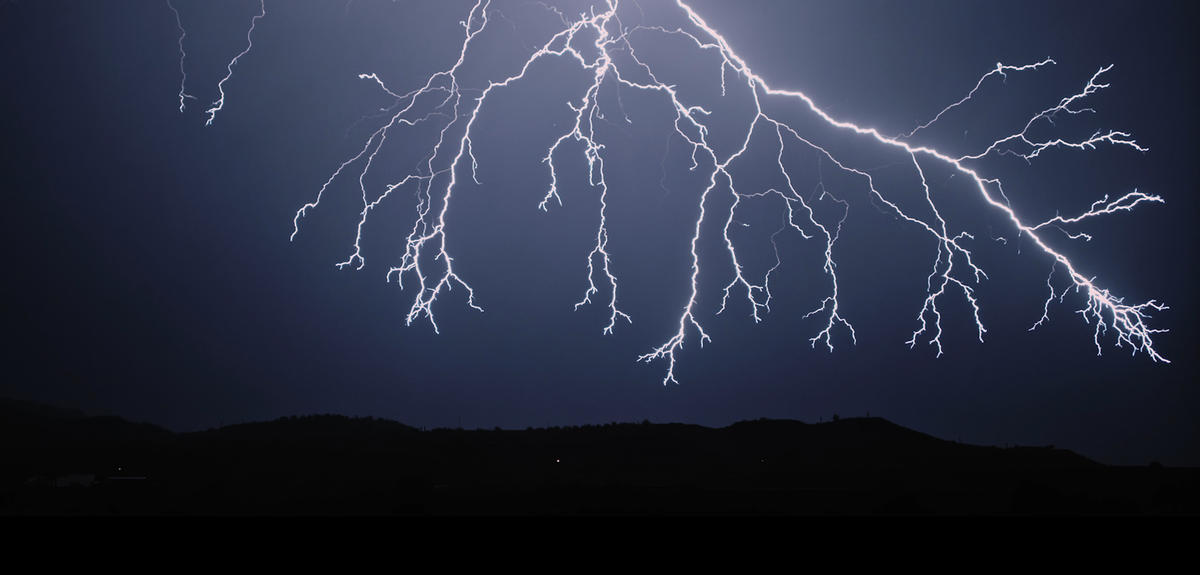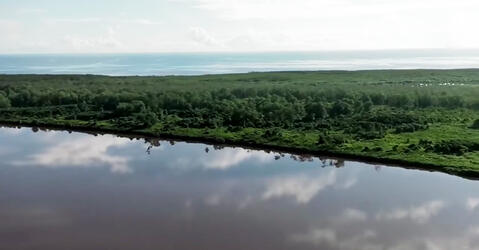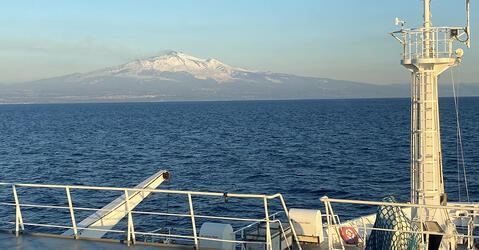You are here
Thunderstorms. Clouds bursting with rain. It’s an electrifying spectacle...
Normally, stormy conditions like these are what airplanes try to avoid. But not today.
At Solenzara airbase in Corsica, a chaser is getting ready for takeoff. This is not a military plane, but a scientific one, preparing to approach the storm, and graze the lightning it produces.
This Falcon 20 will record the storm’s activity. It measures the particle dynamics at the heart of the clouds – their microphysics – along with a variety of other phenomena, thanks to its diverse onboard instruments.
ERIC DEFER
So these sensors are very sensitive to lightning, but also to the microphysics within the clouds. There’s also radar, which gives us a vertical profile of the cloud’s composition as well as a reading of the winds at its heart. We also have high-energy particle detectors that measure the energy levels of the particles within the storm.
While scientific research has generated enormous progress in meteorology, there remains a broad number of unanswered questions concerning the lightning storms produce.
What are the conditions at the heart of a storm that release a bolt of lightning?
How do certain lightning formations roll out over dozens of kilometers?
The EXAEDRE research project was initiated to gain insight into these astonishing phenomena, admittedly a breathtaking sight, but also occasionally a destructive force.
The team relies heavily on a Falcon 20 operated by SAFIRE, the French aviation service supporting scientific research, which maintains a fleet of aircraft dedicated to scientific advancement.
BERNARD, THE ULTIMATE PILOT MAN
We’ve punched a lot of holes in this plane to install portholes, both overhead and in the floor. We added a sensory rod at the front, and even upgraded the weight-bearing capacity of the wings. All of this to transform it into a fully-equipped, flying laboratory. Unlike an airliner which is piloted from the front, this one must be piloted from the front and the rear. All of the information circulates through an onboard communications network, which is important, having everyone communicate on the same network. It all requires a little discipline knowing how quickly this plane flies. To give you an idea, in just one minute we’ve traveled 12km. So if it takes a minute to come up with a solution, we’ll be implementing it 12km further on.
Before the plane can take off, the weather conditions must be verified. Two status reports are received daily from engineers at France’s meteorological service.
For this team, a storm warning is a good sign.
The researchers consult with the pilots and meteorologists to formulate a flight plan with the highest likelihood of gathering the best possible data.
PILOT
We also would like to know, depending on the electrical activity - should we go in? There’s a real risk of getting struck by lightning… But if you want us to avoid that, we can adapt our flight strategy in real time...
Next, the SAFIRE team prepares the plane and ensures that all of the scientific instruments are fully functional.
Clearance for departure starts a race against the clock to ensure no precious lightning strikes are missed.
AMBIANT SOUNDSo
So we can fly, if the wind is okay, and assuming everyone is ready.
Back in the command center, scientists follow the plane on their screens and suggest adjustments to the trajectory as the storm evolves.
In order to get the best possible image of the storm, scientists complete their observations with additional instruments on the ground. This agricultural research base has been equipped with a meteorological station, comprised of radar arrays and specialized lasers which can read the atmosphere.
At the same time they rely on a network of antennae called SAETTA, or “Lightning” in Corsican. Twelve of these antennae were installed across the island, ranging from sea level to the highest mountain peak.
SYLVAIN
There are a dozen of stations like this one. Ok, the electronics box is pretty complicated, the installation and so on. But ultimately it’s super simple. It’s like a radio receiver, with its little antenna that detects storms through static electricity.
It’s pretty much the same except this one has a GPS antenna which enables us to record the precise timing of the strikes. Thus we can record the electric peaks within the evolution of the storm and, since they’re properly located, recreate the entire thing in 3D.
This campaign mounted by EXAEDRE is certainly ambitious. That’s because violent storms like these have a very tang impact on society.
Studies have shown that we can expect more violent thunderstorms, but that they’ll occur less frequently. One of the objectives behind this project is to start thinking about how we can use the data collected from lightning to follow the evolution of our climate.
In the calm following the storm, analysis of the data begins. This process might take months, even years, but will eventually make sense of the project’s observations. Work, that will lead to a better understanding of some of the most spectacular phenomena in nature.
Storm Chasers
Flying an airplane into a thunderstorm may not sound like a good idea. Unless you are a physicist. Scientists from the Exaedre project have led an exceptional mission to study the physics of lightning from up close.
Sylvain Coquillat
Laboratoire d'Aérologie (LA)
Université Toulouse Paul Sabatier / CNRS
Dominique Duchanoy
SAFIRE
CNRS / Météo-France / Cnes





